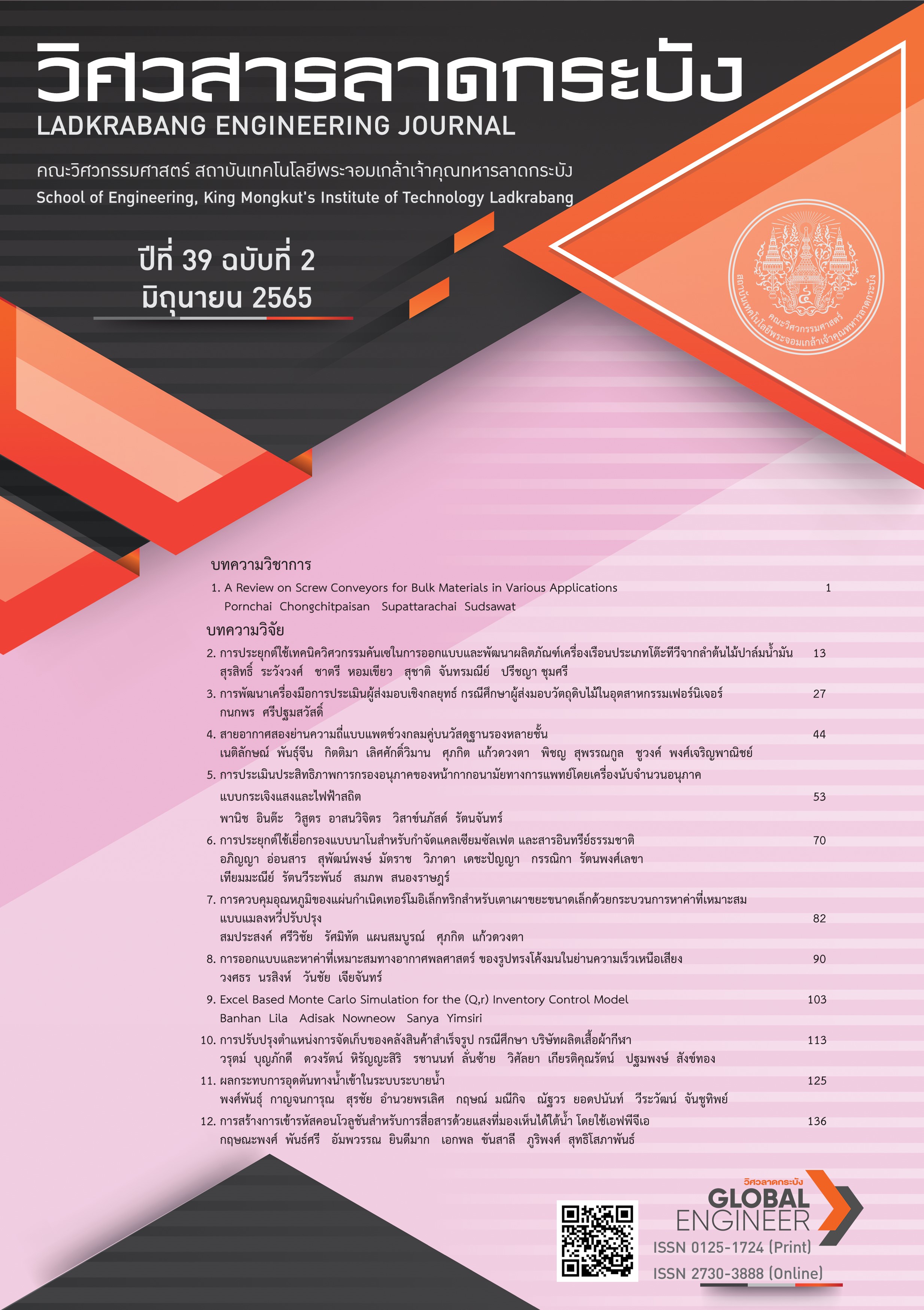Application of Kansei Engineering Techniques in the Design and Development of TV Table Furniture Products from Oil Palm Trunks
Keywords:
Product Development, TV Table, Kansai Engineering, Oil Palm Trunk, Product DesignAbstract
This objective aims to apply Kansei engineering techniques in the design and development of TV table furniture products from oil palm trunks. To create an idea for the development of products that can respond to the that meets consumer needs through quantification theory type 1 (Linear multiple regression) with a Likert scale. To form of the forecast equation for showing the relationship between sentiment with product attributes and for simulating new product models. The results of the quantification theory type l revealed that five product attributes could be defined for product design: usage, contours, decoration material, product size and product form. In addition, it was found that expressions of sentiments that correlate with product attributes for design can also be include, weight-bearing, usability, shape, usable space, luxury, beauty, and uniqueness. Therefore, the results of this research can serve as a guide to help designers to define product attributes that represent the feel-good relationship for designing and developing new products in accordance with customer needs.
References
P. Natakueatung, A. Sareebut and S. Egwutvongsa, “Study and Design of Products from Palm Fiber,” Journal of Industrial Education, vol. 14, no. 2, pp. 613–621, 2015.
S. Noothimthong, K. Kunta, and W. Poochinda, “Sustainable Oil Palm Production in Accordance with RSPO Standards,” Journal of Vocational Institute of Agricultural, vol. 4, no. 2, pp. 1–14, 2020.
Classified by Age Range: Perennial Area Fruiting Area, Yield and Yield per Fruiting Area Separated by Age Including Country, Region and Province in 2019, Office of Agricultural Economics Thailand, Nov. 1, 2021 [Online]. Available: shorturl.asia/0F63P
A. Suzianti and A. Aldianto, “Redesign of Product Packaging with Kansei Engineering: Empirical Study on Small-Medium Enterprises in Indonesia,” Makara Journal of Technology, vol. 24, no. 2, pp. 65–71, 2020, doi: 10.7454/mst.v24i2.2990.
S. Schütte, “Designing Feelings into Products: Integrating Kansei Engineering Methodology in Product Development,” Ph.D. dissertation. Dept., Mech Eng., Linkopings Univ., Linkopings, Sweden, 2002.
M. C. Chen, K. C. Chang, C. L. Hsu and J. H. Xiao, “Applying a Kansei Engineering-Based Logistics Service Design Approach to Developing International Express Services,” International Journal of Physical Distribution & Logistics Management, vol. 45, no. 6, pp. 618–646, 2015, doi: 10.1108/IJPDLM-10-2013-0251.
S. Yodwangjai, “Product Design and Development for Dinner Chair of Kansei Engineering,” KKU Engineering Journal, vol. 41, no. 2, pp. 191–200, 2014.
J. Pitaktiratham, T. Sinlan, P. Anuntavoranich and S. Sinthupinyo, “Application of Kansei Engineering and Association Rules Mining in Product Design,” International Journal of Economics and Management Engineering, vol. 69, pp. 198–203, 2012, doi: 10.5281/zenodo.1081675.
R. Roy, M. Goatman and K. Khangura, “User-centric design and Kansei Engineering,” CIRP Journal of Manufacturing Science and Technology, vol. 1, no. 3, pp. 172–178, 2009, doi: 10.1016/j.cirpj.2008.10.007.
K. Pimapunsri, “New Product Development Using Kansei Engineering,” in the 2nd National Conference on Industrial Operations Development, Bangkok, Thailand, May 11, 2011, pp. 331–337.
S. Schütte, “Developing the Space of Product Properties Supporting Kansei Engineering Procedure,” Kansei Engineering International, vol. 5, no. 4, pp. 11–19, 2006, doi: 10.5057/kei.5.4_11.
K. Prayoonwong, “Application of Kansei Engineering for New Product Development: Conceptual Wardrobe
Product Design,” M.E. Thesis, Dept. Ind. Eng., King Mongkut's University of Technology North Bangkok, Bangkok, Thailand, 2012.
S. H. Lee, A. Harada and P. J., Stappers. “Design based on Kansei,” in Pleasure with Products, Copenhagen, Denmark: Taylor & Francis, 2002, ch. 16, pp. 212–222.
A. Ongiem and P. Vichitvejpaisal, “Validation of the Tests,” Thai Journal of Anesthesiol, vol. 44, no. 1, pp. 36–42, 2018.
N. Kongprasert, “Emotional Design Approach to Design Teak Wood Furniture,” The 13th The Asia Pacific Industrial Engineering & Management Systems Conference, Phuket, Thailand, Dec. 2–5, 2012, pp. 805–812.
S. Rawangwong, C. Homkhiew, P. Phanthasri and P. Chumsri, “Design and Development of Krajood Decorations Products Using Kansei Engineering Technique and Kano’s Model,” UBU Engineering Journal, vol. 14, no. 4, pp. 181–193, 2021.
Downloads
Published
How to Cite
Issue
Section
License
Copyright (c) 2022 Faculty of Engineering, King Mongkut’s Institute of Technology Ladkrabang

This work is licensed under a Creative Commons Attribution-NonCommercial-NoDerivatives 4.0 International License.
The published articles are copyrighted by the School of Engineering, King Mongkut's Institute of Technology Ladkrabang.
The statements contained in each article in this academic journal are the personal opinions of each author and are not related to King Mongkut's Institute of Technology Ladkrabang and other faculty members in the institute.
Responsibility for all elements of each article belongs to each author; If there are any mistakes, each author is solely responsible for his own articles.






